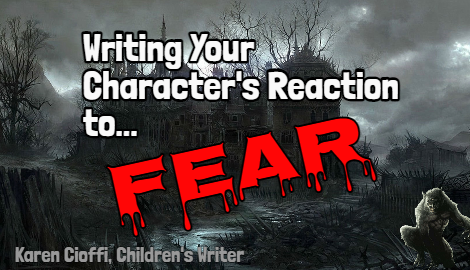The best way for your character to connect with the reader is by allowing the reader to see the character’s emotions. While conflict is a biggie in getting the reader involved in the story, if the character doesn’t show emotions, the conflict wouldn’t hold much weight. What do I mean by this? Suppose Ara is confronted by a couple of bullies who want Ara to give them his bike. Without emotion, Ara hands his bike over and goes on his way. In this scenario, the reader would miss out on what Ara thinks and feels. The reader will feel short-changed and lose any interest she may have had. Now suppose it’s the same situation, but Ara reacts. Using this scenario, below is a list of ways to get the reader on board with the character. 1. Internal thoughts. Ara’s heart raced, and his stomach took a nose-five as his thoughts crashed around in his head. What should I do? I can’t give them my bike. What will they do if I don’t hand it over? They’re going to pound me. Maybe I can push the bike at them and run… Through internal thoughts, the reader can grab onto Ara’s fear. This will cause the reader to feel what Ara is feeling and want to see him get safely away. It’ll also allow the reader to connect with the feeling of fear they may have felt at one time. This brings the reader-character connection even closer. It’s about stirring feelings in the reader. 2. Visceral reactions. In the scenario in No. 1, Ara’s heart raced, and his stomach took a nosedive. These are involuntary reactions to what’s going on, and they’re usually immediate. As a heart racing and sick stomach are common responses to fear, the reader will understand what Ara is going through. It will allow the reader to connect with Ara and feel for him. Other visceral reactions (sensations) might be his knees buckling; his hands trembling; sweating profusely; his face turning white; his breathing speeding up; nausea gripping his stomach… Emotions like this can make the scene intense. You don’t, though, want to overdo it. Give the reader just enough to generate understanding and sympathy. 3. Body language, including posture. Imagine how Ara’s body reacts when he’s confronted by the bullies. Something as simple as his posture can speak volumes. Did he convey fear? -Ara gripped the handlebars, his knuckles turning white. -Ara’s shoulders slumped. -Ara brushed his hand across his forehead, hoping the bullies didn’t see the sweat. -Ara slumped behind his bike. -Ara scanned the park, hoping to find someone to help him. -Ara’s chest caved in. -Ara leaned his body away from the bullies, reading himself to take flight. Did he prepare for battle? -Ara’s back stiffened, and his hands formed fists. -Ara stood tall with his chest out. -Ara crossed his arms and tilted his head. -Ara maneuvered the bike between him and the bullies, preparing to push it at them and run. -Ara lifted the bike above his head, threw it at the bullies, then ran. 4. Vocalization. How the character speaks is another telltale mark of emotions. If fear is running the show, Ara might: -Stutter -Have a trembling voice -Whisper -Talk in a high pitch -Mispronounce words -Talk fast If anger and control are running the show, Ara might: -Talk slow and deliberate -Lower his voice -Talk loudly If anger and lack of control are running the show, Ara might: -Yell -Spit as he yells -Flail his arms as he yells -Curse -Rant While emotions are essential to creating a multi-dimensional character, you also need dialogue and action. All these elements work together to help create a powerful character that will grip the reader and motivate the reader to become involved and keep turning the pages.
I’m a working children’s ghostwriter, editor, and coach. I can help turn your story into a book you’ll be proud to be the author of, one that’s publishable and marketable. Or maybe you’d rather do-it-yourself. Check out my book, HOW TO WRITE A CHILDREN’S FICTION BOOK. There’s also an online course: FICTION WRITING FOR CHILDREN ECOURSE. If your children’s manuscript is finished and you need help self-publishing, check out WRITERS ON THE MOVE PRESS. You can contact me at: kcioffiventrice@gmail.com. Or give me a call at 347—834---6700. (Please leave a message- I'll get back to you as soon as I can.)


